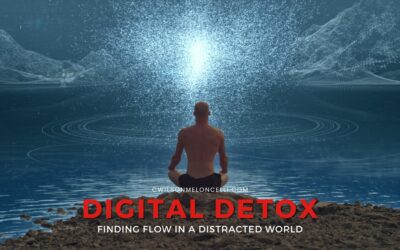
In the late 1960s, NASA commissioned a groundbreaking study to understand and identify creative genius among its engineers and scientists. Led by Dr. George Land and Dr. Beth Jarman, the study yielded astonishing results that have profound implications for our understanding of creativity and its decline over time. The study revealed that while 98% of children aged 3-5 exhibited creative genius, this figure plummeted to 30% by age 10, 12% by age 15, and a mere 2% in adults. This decline is deeply intertwined with our education system and societal structures, which stifle creativity and impose fixed belief systems.
The Decline of Creativity and the Fixed Mindset
The NASA study highlights how traditional education systems and societal expectations contribute to the decline of creativity. As children grow older, they are increasingly subjected to standardized testing and rigid curricula that prioritize convergent thinking—finding the one correct answer—over divergent thinking, which involves generating multiple, creative solutions. This educational approach embeds a fixed mindset in students, leading them to believe that their abilities are static and limited to specific domains.
Impact on Adults: Adults who have internalized these fixed beliefs often struggle with creativity and innovation. They may feel constrained by the notion that tasks must be done in a certain way, which hinders their ability to think outside the box and engage in creative problem-solving. This mindset not only affects professional and personal growth but also impedes the ability to enter the flow state.
Flow State and Intrinsic Motivation
The flow state, a concept popularized by psychologist Mihaly Csikszentmihalyi, is characterized by complete immersion and enjoyment in an activity. Achieving flow requires a balance between challenge and skill, as well as a deep intrinsic motivation—the internal drive to pursue activities for their own sake, rather than for external rewards.
Intrinsic Spark: Each individual has a unique intrinsic spark, a source of motivation that fuels their engagement and creativity. For children, this spark is evident in their natural curiosity and imaginative play. However, as societal and educational pressures mount, this intrinsic motivation can be suppressed, making it harder for individuals to access the flow state.
Overcoming Blocks to Creativity and Flow
Belief Systems and Mindsets: One of the major barriers to accessing the flow state is the fixed mindset instilled by traditional education. This mindset creates a mental block, preventing individuals from experimenting, taking risks, and expressing their true selves. To overcome this, it's essential to cultivate a growth mindset, which embraces challenges and views failures as opportunities for learning and growth.
Nurturing Creativity: Encouraging divergent thinking and providing opportunities for creative expression are crucial. This can be achieved through:
Flexible Learning Environments: Incorporating project-based learning, arts, and open-ended tasks in educational settings to foster creativity.
Mindfulness and Play: Engaging in mindfulness practices and playful activities that reduce critical self-judgment and enhance creative thinking.
Challenging Tasks: Taking on new and challenging activities that align with personal interests to stimulate the brain and facilitate flow.
Conclusion
The NASA creativity study underscores the significant decline in creativity from childhood to adulthood, a trend largely influenced by our education system and societal norms. This decline not only affects creative potential but also hampers the ability to enter the flow state. By recognizing and addressing these barriers, fostering intrinsic motivation, and promoting a growth mindset, individuals can rekindle their creative spark and more effortlessly enter flow, ultimately leading to a more fulfilling and innovative life.
Embracing the traits of a Maverick—personal autonomy, challenging the status quo, thinking outside the box, taking risks, unyielding persistence, inspirational leadership, quick adaptive learning, and intrinsic motivation—can help break free from the constraints imposed by traditional systems. Mavericks trust their own judgment, embrace uncertainty, and are deeply committed to their goals. Their intrinsic motivation and willingness to take risks create the perfect conditions for achieving flow.
To explore more about achieving flow and harnessing your intrinsic spark, watch this detailed tutorial. This video delves into how adopting these Maverick traits can help you break free from limiting beliefs and unlock your full creative potential.

The Erosion of Creativity and Its Impact on Flow States: Insights from the NASA Study infographic
References
- NASA's Study on Children: How Traditional Schooling Reduces Creative Spark
[YourStory](https://yourstory.com)
- Evidence that Children Become Less Creative Over Time (and How to Fix It)
[Idea to Value](https://www.ideatovalue.com)
- The NASA Test that Reveals Your Creative Potential
[Create Potential](https://www.createpotential.com)
- Crisis - Britfield Institute
[Britfield Institute](https://www.britfieldinstitute.org)
- Children are Born Creative Geniuses
[Montessori From The Heart](https://montessorifromtheheart.com)
- We Are Born Creative Geniuses and The Education System Dumbs Us Down, Study Reveals
[Family Life Goals](https://familylifegoals.com)









